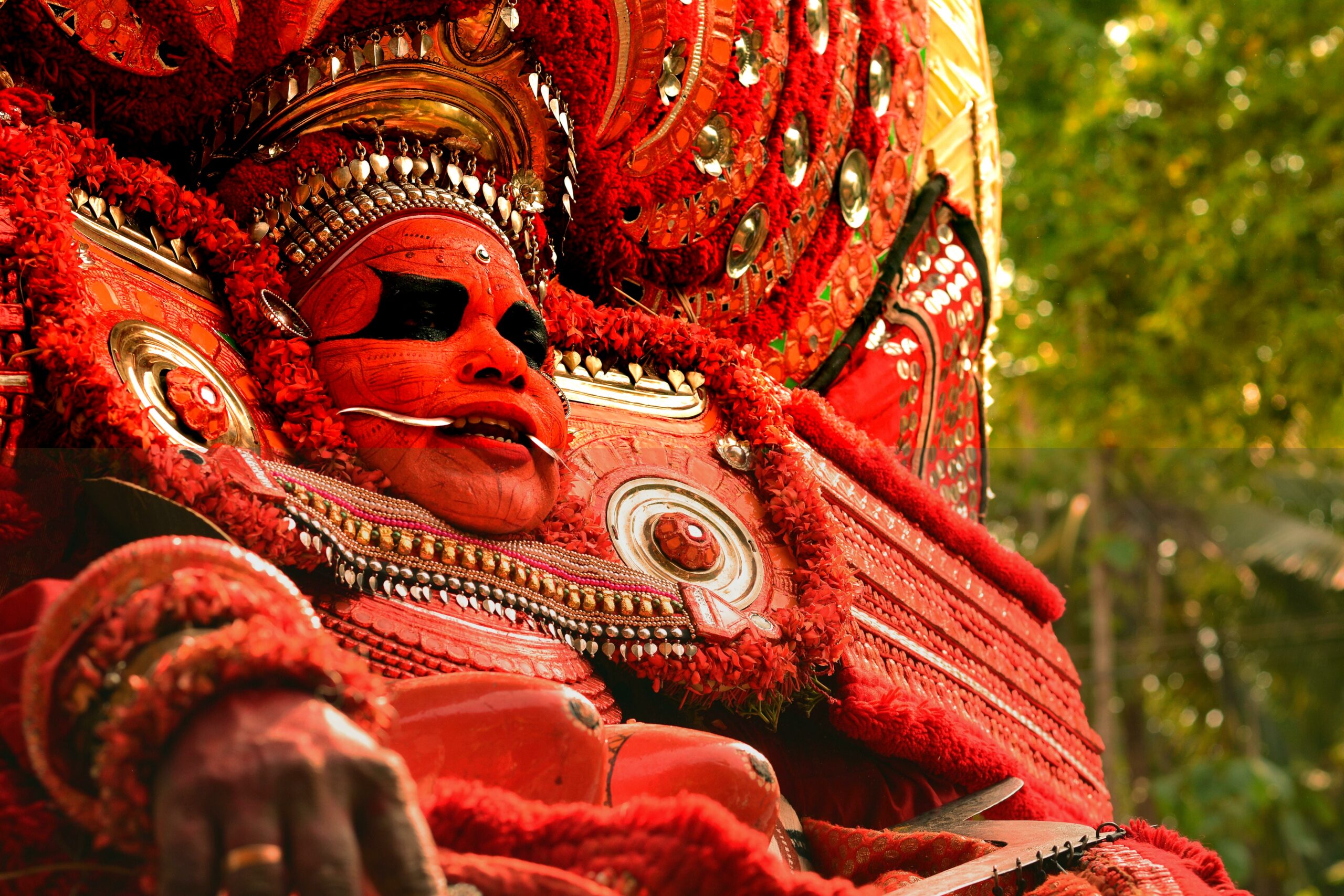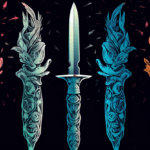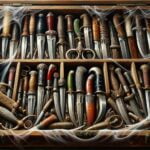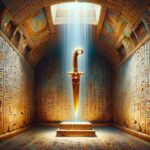Are you prepared to commence an expedition into legendary regions inhabited by swords forged in the midst of flames? This article aims to elucidate the enigmatic realm of renowned daggers, divulging obscure legends and investigating the profound symbolism associated with these legendary implements. Please accompany me as we explore the obscured narratives pertaining to these esteemed swords, each harboring its own enigma and enthralling past. Anticipate to be transported to a realm where legends, heroeintertwinestial beings converge, and where the prowess of an individual dagger can determine the course of entire nations. Anticipate an engrossing investigation into the mysterious realm of renowned daggers from mythology.
Famous Daggers in Mythology
Within the intriguing domain of mythology, where celestial beings and mortal beings converge, the importance of objects transcends their mere physical appearance. Mythological artifacts, such as weapons, armor, and jewelry, function as conduits for potent symbolism and bear the burden of legendary anecdotes. In the realm of mythology, renowned daggers occupy a unique position due to the tales surrounding them, which are replete with mystery, valor, and even curses.
An example of such a legendary dagger is the Parazonium, which in Welsh mythology is frequently attributed to Virtus, Mars, the Roma, or the Emperor. This dagger symbolizes authority and power by embodying virtues such as strength, bravery, and integrity. The lustrous blade functions as both a protective instrument and an emblematic figure of the celestial entities it upholds.
As one proceeds eastward, one comes across daggers that are revered in Malay and Indonesian folklore, including the renowned mythical Kris Mpu Gandring. This dagger is enchanted with a curse that threatens the demise of whoever possesses it. The blade’s sly curvature encapsulates the fundamental nature of its malevolent allure, rendering it simultaneously alluring and perilous. Kris Mpu Gandring serves as a poignant reminder that influence is not without its drawbacks and can be dual-edged.
Upon entering the domain of Greek mythology, one encounters the revered Baetylus, a stone that is said to contain life. This extraordinary entity symbolizes the spiritual bond between the earth and its divine progenitors. As a representation of the eternal and its presence in the mortal sphere, the Baetylus exemplifies the complex relationship between humans and gods.
The Armor of Achilles, which was forgested by the formidable Hephaestus, is revered and admired in Greek mythology. This magnificent armor, renowned for its impregnability, safeguarded the hero during his epic conflicts. The reflective nature of its surface serves as a testament to the divine protection that it grants to its wearer, making it resistant to any assault. The Armor of Achilles is a symbol of the eternal connection that exists between celestial beings and valiant warriors.
When delving into Norse mythology, the focal point becomes the Brísingamen, which is the necklace associated with the deity Freyja. Designed with unparalleled craftsmanship by the dwarves, this extraordinary jewelry item exudes elegance and allure. The Brísingamen personifies the allure of strength and ambition, serving as a symbol of the divine feminine and the enigmatic aspects of romanticism.
These objects and daggers from mythology, which are laden with legend and symbolism, provide us with a glimpse into the intricate tapestry of ancient tales. Their narratives transport us on fantastical odysseys replete with heroism, peril, and the perpetual conflict between forces of righteousness and malevolence.
“From the cursed Kris Mpu Gandring to the unbreakable Armor of Achilles, these famous daggers in mythology carry tales that transcend time and touch the depths of the human spirit.”
Notable daggers have consistently captivated the imaginations of history buffs and adventurers with their enigmatic allure. Whether elaborately embellished or exceptionally keen, these legendary weapons have been the subject of centuries of anecdotes and legends. You need look no further to become engrossed in the captivating world of renowned daggers. Investigate our assortment of weapons that have historical significance and reveal the mysteries they conceal. Click here to embark on an unforgettable journey with us: Famous Daggers.
The Most Powerful Mythological Weapons That Shaped Legends
Mythical warriors and their exceptional weapons are depicted differently in each culture, owing to ancient legends and fabled battles. Join us on an exploration of the ten most formidable mythical weapons that have profoundly influenced folklore worldwide and engrossed our imaginations.
10. Ruyi Jingu Bang: The Mythology of China
Within the realm of Chinese mythology, Sun Wukong, the legendary Monkey King, undertakes an epic quest in search of an ideal weapon. The Ruyi Jingu Bang, an enormous iron rod in black, was discovered by him in the depths of the East Sea. Utilized by the deities to level and quantify the Milky Way’s bed, this formidable rod possesses the capability to expand and saturate the universe in accordance with its user’s volition.
9. Kentucky Hindu Mythology: Kentucky Hindu Kada
Kentucky, a malevolent yet benevolent demon, is said to have been duped by the deity Vishnu into transforming into the Gada, a mace-like weapon of formidable power. Having been crafted by the divine architect Visvakarma, Vishnu acquired this formidable weapon. The Kentucky Hindu Kada, which is linked to Krishna in the great Hindu epic Mahabharata, is a significant relic of Vishnu and symbolizes his omnipotence and divine might.
8. Zulfiqar: The Mythology of Islam
Unofficially referred to as the Muslim Excalibur, Zulfiqar is a legendary sword that the Prophet Muhammad himself bestowed upon Ali ibn Abi Talib. It is said that this curved split blade exhibits remarkable sharpness, enabling it to sever both horses and riders with a solitary stroke. Due to its immense mythical power, it would have submerged into the ground were it not for the archangel Gabriel’s intervention.
7. The Lightning Bolt of Zeus: The Mythology of Greece
The lightning bolt of Zeus, fashioned by the Cyclopes and Hecatoncheires as an expression of appreciation for their liberation at the hands of Zeus, represents not only the might and power of the deity monarch but also his authority over the heavens and thunder. The lightning bolt symbolizes not only a weapon but also the domain of Zeus and the power by which he exercises dominion over the pantheon of Olympian deities.
6. The Hindu Mythology of Gandiva
Proudly the most formidable bow ever devised, Gandiva is adorned with an inexhaustible supply of quivers filled with missiles. The strings emit a thunderous reverberation with every release. The bow, which was fashioned by the ancient and absolute Brahman, selects its user and forges a special connection with them. It is said that the legendary archer Arjuna established an unparalleled bond with Gandiva, thereby appropriating it as his own.
5. The Mythology of the Lance of Longinus in Christianity
This formidable projectile, also referred to as the Lance of Longinus and the projectile of Destiny, is reputed to have the capacity to influence the fate of its user. Nevertheless, the curse that accompanies the weapon is equally formidable, as its possessor is doomed to perish within days. Prominent global conquerors, including Adolf Hitler and Napoleon Bonaparte, have endeavored to acquire this renowned armament in the hope that it would bestow upon them the capability to subdue the planet.
4. The Norse Mythology of Gungnir
Within the domain of Norse mythology, the Gungnir projectile is revered as the personal weapon of the All-Powerful Odin. This exceedingly potent weapon, crafted by the dwarves for the mischievous deity Loki, is one of the three relics Loki offers in exchange for his redemption. The Gungnir weapon serves as a symbol of Odin’s power and is heavily involved in the epic tales and legendary battles of the Norse gods.
3. Green Dragon Crescent Blade: Mythology of the Chinese
The celestial realms themselves bestowed the Green Dragon Crescent Blade, alternatively referred to as the Holy Quan Dowel, upon the formidable warrior Kuan Yu. It is a weapon that terrifies all adversaries of the forces of darkness. This weapon, crafted from droplets of blood from a green dragon and forged beneath a full moon, represented Kuan Yu’s fortitude and commitment to vanquishing malevolence.
2. Kusanagi no Tsurugi: The Mythology of Japan
The Imperial regalia consists of a mirror, a jewel, and the Kusanagi no Tsurugi sword, all of which were bestowed by the deity Amaterasu. This renowned blade was bestowed upon Yamato Takeru as an emblem of harmony; it was upon him that he discerned its ability to manipulate the wind. This emblematic weapon, which was renamed Ame no Murakumo no Tsurugi and translates to “sword of the gathering clouds of heaven,” was instrumental in restoring peace to the devastated nation of Japan during the war.
1. Excalibur and Carnwennan: The Mythology of Britain
Masterfully crafted by the intrepid blacksmith Tom, Excalibur is widely acknowledged as King Arthur’s most potent weapon. Crafted at the instigation of the great wizard Merlin and infused with the breath of a dragon, Excalibur was endowed with the power to vanquish any foe, mortal or magical. Furthermore, King Arthur possessed the enigmatic dagger Carnwennan, an artifact endowed with the ability to envelop oneself in a mystical gloom.
Mythical weapons, which encompass the power and symbolism of legendary tales, are unique to each culture. Whether formidable swords or mysterious daggers, these artifacts hold considerable importance in the perpetual conflict between righteousness and malevolence.
“These mythical weapons have become the embodiment of ancient legends, showcasing strength, courage, and the triumph of heroes throughout time.”
FAQ
Which Daggers are mythological icons?
Prominent daggers in mythology include the Parazonium, which was commonly wielded by figures such as Virtus, Mars, Roma, and the Emperor in Welsh mythology; the Kris Mpu Gandring, which was a dagger veiled in evil and found in Indonesian and Malay folklore; and the dagger of King Arthur, which was often linked with the legendary Excalibur.
How important are mythological daggers?
Often symbolic in nature, mythological daggers hold key roles in folklore and tradition. They might be tools of heroism, emblems of power, or shields from danger. Furthermore, these daggers could reflect the core of great personalities and their amazing adventures.
Exist any legendary daggers claimed to have possessed superhuman powers?
Mythological daggers are supposed to have amazing powers. For example, the Kris Mpu Gandring is supposed to bring its users death and bad fortune. Furthermore claimed to be invincible and providing supernatural protection was Hephaestus’ creation, the Armor of Achilles.
Which historical personalities are usually connected with mythological daggers?
Prominent people connected to mythological daggers are King Arthur, whose dagger is usually connected with the fabled Excalibur; Odysseus, who blinded Polyphemus, the Cyclops, with a dagger; and Medea, who carried a knife blessed with the capacity to metamorphoze her enemies.
Where may I find more information about famous mythological daggers?
Consult reliable sources as the Kidadl article on historical Daggers and the Wikipedia article on magical weapons to get further understanding about well-known Daggers in mythology. These materials provide thorough knowledge on a great variety of famous weapons and daggers from several historical times and mythology.
q
- SYBAU See You Baby Meaning: Gen Z Slang Evolves - July 1, 2025
- Unlock Your Inner Youth: Lifestyle Secrets for a Vibrant Life - July 1, 2025
- Decode SYBAU Meaning: Gen Z Slang Explained - July 1, 2025






